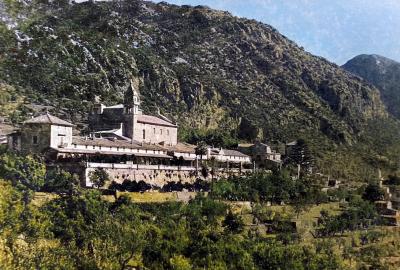How do terraced landscapes in Mallorca influence the accessibility of olive farms for harvesting?
Similar Topics
terraced landscapes mallorca
olive farm accessibility
terraced farming benefits
soil erosion prevention
manual olive harvesting
narrow access paths
traditional olive farming
irrigation in terraces
Terraced landscapes in Mallorca play a significant role in shaping the accessibility of olive farms for harvesting. These terraces were historically constructed to manage the island’s hilly terrain and prevent soil erosion, creating flat cultivation areas on steep slopes. While they serve the essential function of stabilizing the soil and maximizing arable land, the terraces also influence how easily farmers can reach and work in the olive groves. Due to their stepped construction, access paths tend to be narrow and uneven, requiring careful navigation, especially during the harvest season.
The layout of terraces often means that farmers must move from one level to another via stone steps or small paths, which can slow down the transport of equipment and harvested olives. In some areas, the terraces are tightly packed, limiting the use of modern machinery and necessitating more manual labor. This traditional method of harvesting, while labor-intensive, allows producers to maintain the quality of the olives and preserve the cultural heritage of Mallorca’s farming practices. However, the physical effort and time involved mean that accessibility can be challenging for those unfamiliar with the terrain or those with mobility issues.
Despite these challenges, the terraced design provides several benefits that indirectly aid accessibility. By creating stable planting surfaces, the terraces reduce the risk of landslides and large-scale erosion, making the farms safer and more reliable across seasons. Additionally, these terraces often incorporate small irrigation channels, improving water management and ensuring healthier olive trees, which can positively impact harvest efficiency. Overall, while terraced landscapes impose certain physical limitations on accessibility, they also contribute to the sustainability and resilience of Mallorca’s olive farms, preserving them as functional and picturesque agricultural sites.
The layout of terraces often means that farmers must move from one level to another via stone steps or small paths, which can slow down the transport of equipment and harvested olives. In some areas, the terraces are tightly packed, limiting the use of modern machinery and necessitating more manual labor. This traditional method of harvesting, while labor-intensive, allows producers to maintain the quality of the olives and preserve the cultural heritage of Mallorca’s farming practices. However, the physical effort and time involved mean that accessibility can be challenging for those unfamiliar with the terrain or those with mobility issues.
Despite these challenges, the terraced design provides several benefits that indirectly aid accessibility. By creating stable planting surfaces, the terraces reduce the risk of landslides and large-scale erosion, making the farms safer and more reliable across seasons. Additionally, these terraces often incorporate small irrigation channels, improving water management and ensuring healthier olive trees, which can positively impact harvest efficiency. Overall, while terraced landscapes impose certain physical limitations on accessibility, they also contribute to the sustainability and resilience of Mallorca’s olive farms, preserving them as functional and picturesque agricultural sites.
🧩 Related Questions
Related Question
Are there any specific hiking trails or routes in Mallorca that are best experienced in spring or autumn?
Related Question
What mentorship programs does the University of the Balearic Islands offer to encourage women's leadership?
Related Question
Are there any local experts or guided tours available to help visitors forage safely in Mallorca?


